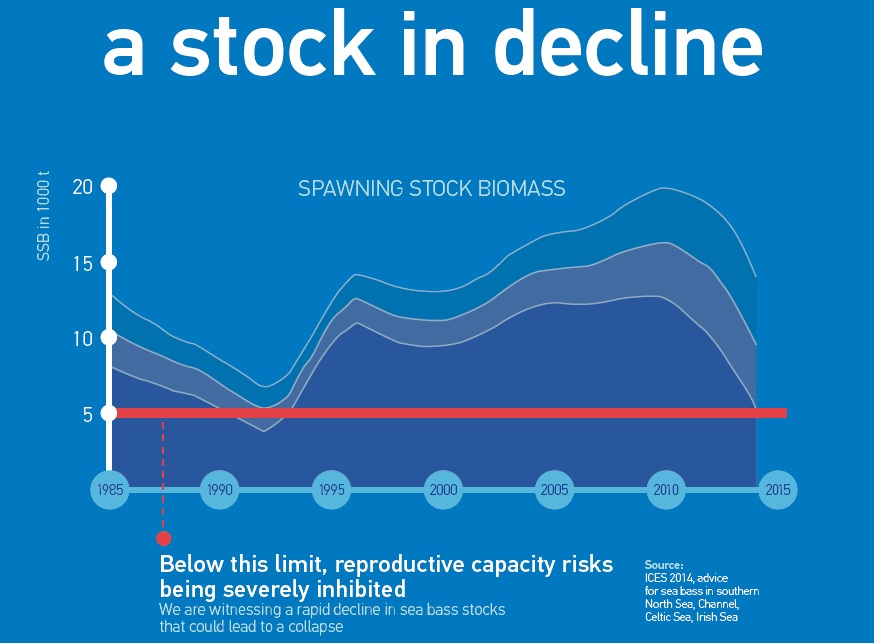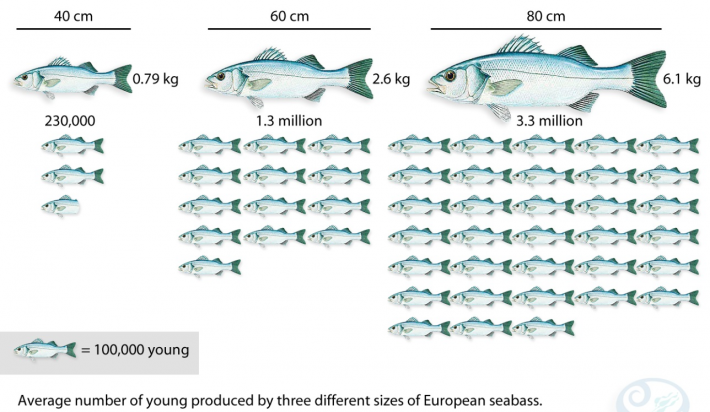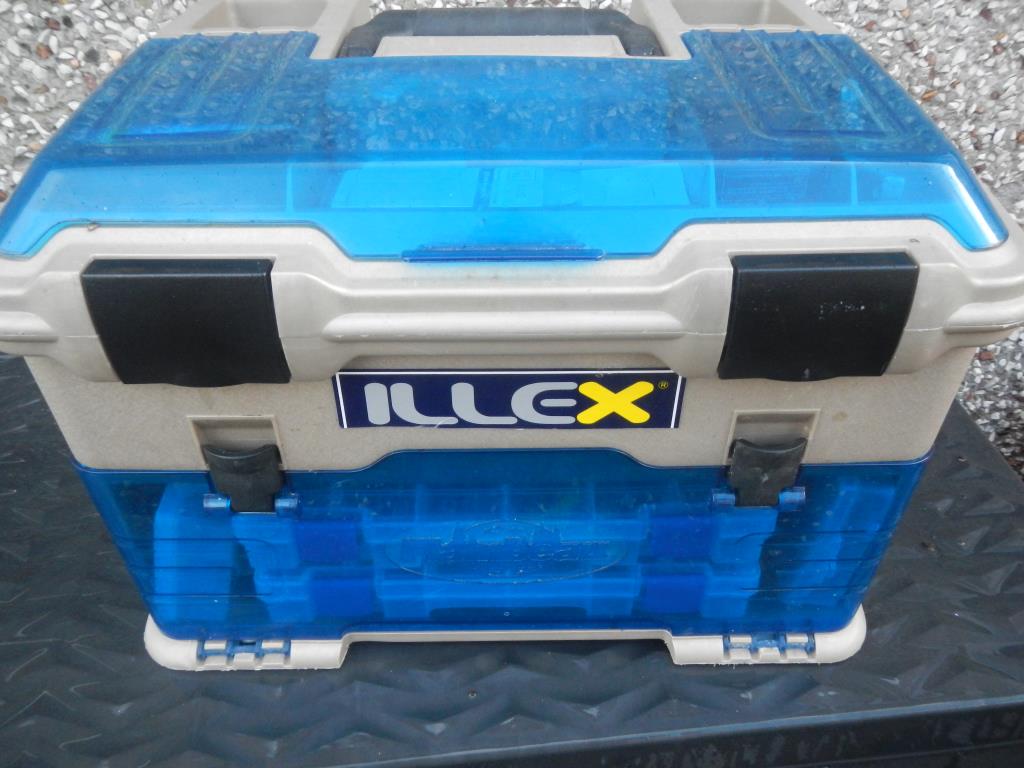* Bass – The 2016 Situation from an Irish Perspective
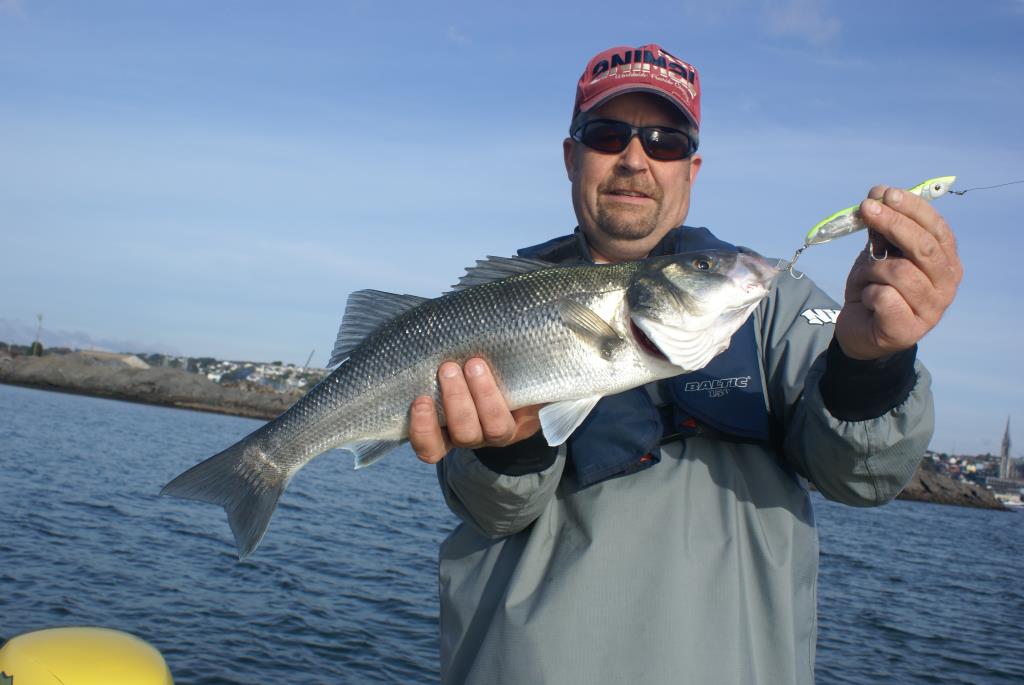
Bass – the 2016 position
At the EU Fisheries Council meeting in December 2015 there were decisions taken that will impact fish and fishing for years to come. For the second year in a row bass were involved in the discussion.
It is important to clarify the position of bass around the EU. In the first instance Ireland has had conservation laws in place for more than twenty five years. In their final guise there is a ban on the sale of Irish Bass and commercial fishermen are barred from targeting bass in Irish controlled waters (Technically this is up to 12 miles from the shore. Outside that the waters are EU controlled.) Anglers have a bag limit of two fish in 24 hours.
So, the position is fairly straightforward; bass in Ireland are a fish that are reserved for anglers. Bass that you see for sale in Ireland are farmed fish imported from Spain, Turkey and Greece. There was a few disturbing examples of larger fish being imported from France but the practice seems to have ceased.

In other EU countries the situation is rather different. Up until 2015 there has been no restrictions on bass fishing. It has been basically a free-for-all in all areas except for some estuaries where recognised bass nursery areas are protected.
It is important to point out that the further south you go the better the climatic conditions are for bass. There is no doubt that the English channel and the coast of France is great bass habitat. The fish grow quicker than in Ireland. There is more fish than in Ireland. Even speaking with Uk and French anglers we can see that the bass in these areas are “different” in their habits than our Irish bass. Our bass are almost exclusively resident on the shoreline. There are few places in Ireland where bass can be caught on offshore reefs. Our Wrecks do not hold bass. Irish bass are shore huggers!
The Warning Signs
Over recent years scientists flagged bass as a species in trouble. Demand for bass has been growing. A plethora of TV chefs have promoted bass as a sexy fish for eating. The results are more and more demand for bass. Commercial fishermen are quite happy to exploit the market.
Year after year the landings of bass have been increasing. In fact landings have doubled between the mid-90’s and now.
The Spawning Biomass – the volume of fish available for procreating has fallen to levels where the species will struggle to save itself. Drastic measures are necessary.
Scientists warned the EU and the EU decided that action had to be taken to safeguard bass. There are many reasons why the EU would take action but one reason is that the Common Fisheries Policy has committed that no fish should be fished below the Maximum Sustainable Yield (MSY) and this must be the case before 2020.
The dramatic drop in bass biomass meant that action needed to be taken immediately.
The First Attempt.
Late in 2014, at the fisheries council meeting, there were a range of emergency measures. These included increasing the minimum landing size to 42cm, banning mid-water trawling and putting a bag limit of 3 fish on anglers.
Did these measures work? No they did not. While figures are difficult to come by it can be seen from UK landings that there was a reduction of 25% (2014 – 716t, 2015-527t Jan –Oct).

The Second Attempt
In 2015 the EU decided to bring in some more emergency measures. These would largely be in effect for 2016. Thereafter the EU wants a bass management plan to be put in place.
The measures for 2016 are mainly: A ban on trawling for the first six months. Catch and release fishing for anglers for the first six months of the year. A ban on netting and long lining for two months of 2016.
Anglers may retain 1 fish a day for the second six months of the year.
The proposed measures were diluted somewhat due to professional lobbying by commercial interests. Realistically the politicians were sold a pup by the commercials. This is why there is not as much control of commercial fishing as there should be. “low Impact” fishing was given only a two month closed season (closed for the quietest fishing months of the year). Their catch rate was set at 1.3t per vessel per month (Actually increased from 1t in 2015). Classing netters as “low impact” is one of the greatest con jobs concocted by commercial fishing lobbyists!
In Ireland we have no commercial fishing in any case so there is little change for the angler. C&R for the first six months and 1 bag limit for the rest of the year are small sacrifices to be made if it will help bass recover.
In the UK, France, Netherlands and Belgium anglers are fairly peeved, and rightly so. Anglers feel they are bearing the brunt of the conservation measures. Commercial interests managed to convince the politicos that gill netting is a selective means of fishing! Anglers have started petitions online.
Realistically anglers and angling bodies need to be at the table when the proposals for the management plan are being put in place. Anglers should not dwell on 2016 but should look forward.
It is likely that when the catch rate will not fall enough in 2016 that the management measures will be draconian going forward from 2017. Commercials will be hit hard at that stage. It is hard to see how anglers can be expected to do any more than current regulations. It is at that stage that bass can be given the chance to recover.
Current bass measures for 2016 can be summed up from the following diagram:
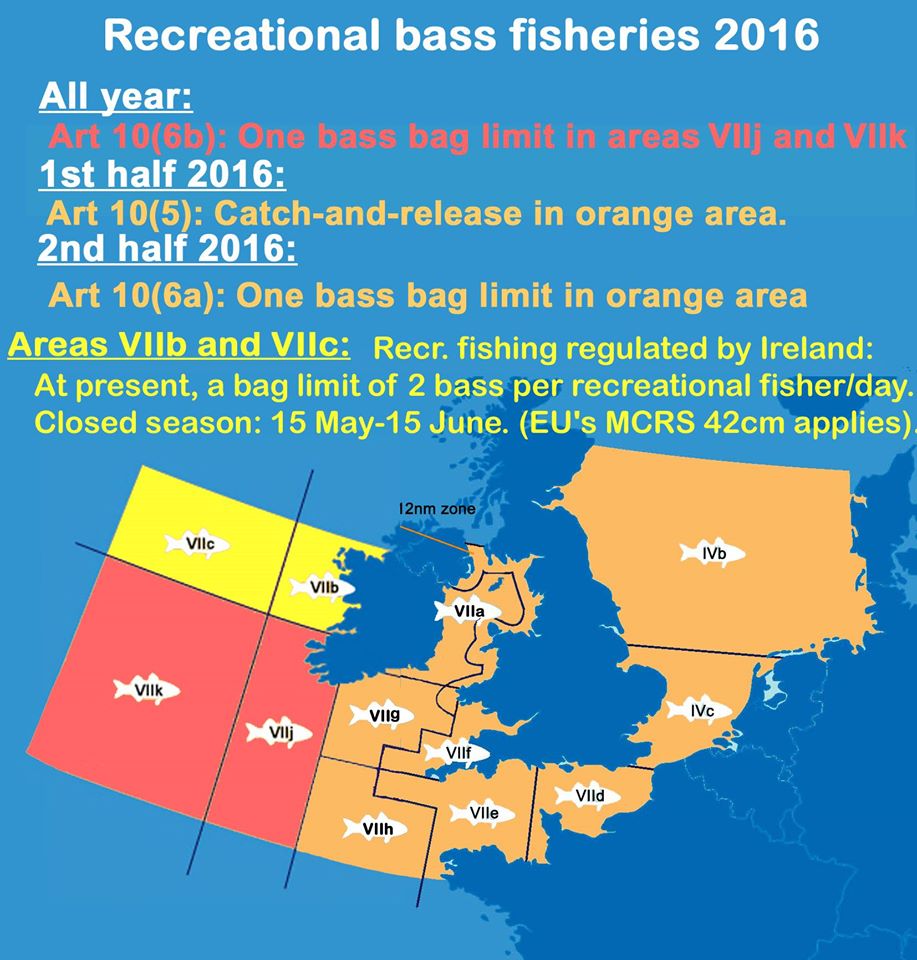
The Irish Question
Inland Fisheries Ireland have decided that legislation is needed for bass protection in Ireland. I was of the opinion that EU regulations would suffice in Irish law with the need for further laws. I would have thought that Irish law makers would use EU Emergency regulations for 2016 and would wait to see what the management plan will bring. In the meantime IFI are asking anglers to respect the C&R rules from Jan – Jun and 1 Fish Limit for the remainder of the year.
Technically, if you look at the diagrams you can see that anglers in Kerry are allowed to retain 1 fish all year round. For simplicity IFI recommend all anglers observe C&R all year.
There is confusion amongst anglers concerning the rules. In Ireland there now exists three administrative areas for bass fishing. This needs to be simplified. (See map for three different coloured areas).
It should also be noted that as part of the EU rules there is no commercial fishing by EU commercial boats in the waters adjacent to Ireland. Previously our ban was for Irish boats only.
The Upshot
Firstly, bass are more protected that they have ever been. The promised management plan will have to go a long way in order to help stocks to recover. The EU has committed to sustainable fishing.
Irish Bass suffered a massive decline in in recent years. Catch rates dropped off a cliff in 2012/13. You may find that anglers that are experiencing better results in the period have changed the way that they fish in some way or another. Of course there are areas that are not suffering as much as others and it may no appear that bass are in trouble. I have heard it lots of times “more bass around than ever”. Targetted sessions can often hide the real picture. The consistency of fishing has been poor in Ireland these last few years. It would be great if we can look forward to better more consistent bass angling in the coming years.
Bass anglers need to keep a close eye on developments in Europe over the next year. We may be called upon to email our local representatives in order to help the case for bass protection. In Ireland we do not have a representative body that represents sea anglers effectively. Therefore we need to act independently. We are in an election year and we should make our representatives aware of the situation regarding bass and the potential for tourist revenue in coastal communities.
We need to have a degree of sympathy with our EU angling buddies. They were really shafted. We would have been shafted too had we had a commercial bass fishery. Protection measures are largely new to many EU anglers. The idea of a bag limit is a problem for some, seen as the “thin end of the wedge” where controls are imposed. This, after all is the first time that many anglers have had controls put upon them. Most anglers however welcome protection for the species.
The education of fellow anglers is important for us all. Make sure that anglers that you meet are aware of the current regulations. Where we see illegal activity going on whether it is illegal commercial fishing or illegal angling it is our duty to report to authorities. There are many vehicles by which to report. If you are in any doubt contact jimclohessy@eircom.net





